Mushrooms have long been integrated into multiple cultures for both food and medicinal purposes. Their meaty, chitin-filled flesh is a suitable meat alternative, and different varieties add distinct flavors to dishes. Though they’re easy to find at the grocery stores, several species of mushrooms can be easily grown at home, including the popular Shiitake (Lentinula edodes).
Shiitake mushrooms are a staple in Asian cuisine and have become quite popular throughout recent years. They have a convex top with a hairy or ragged appearance. These mushrooms grow readily on various species of hardwood trees. Their gills are jagged and they have a white spore print.
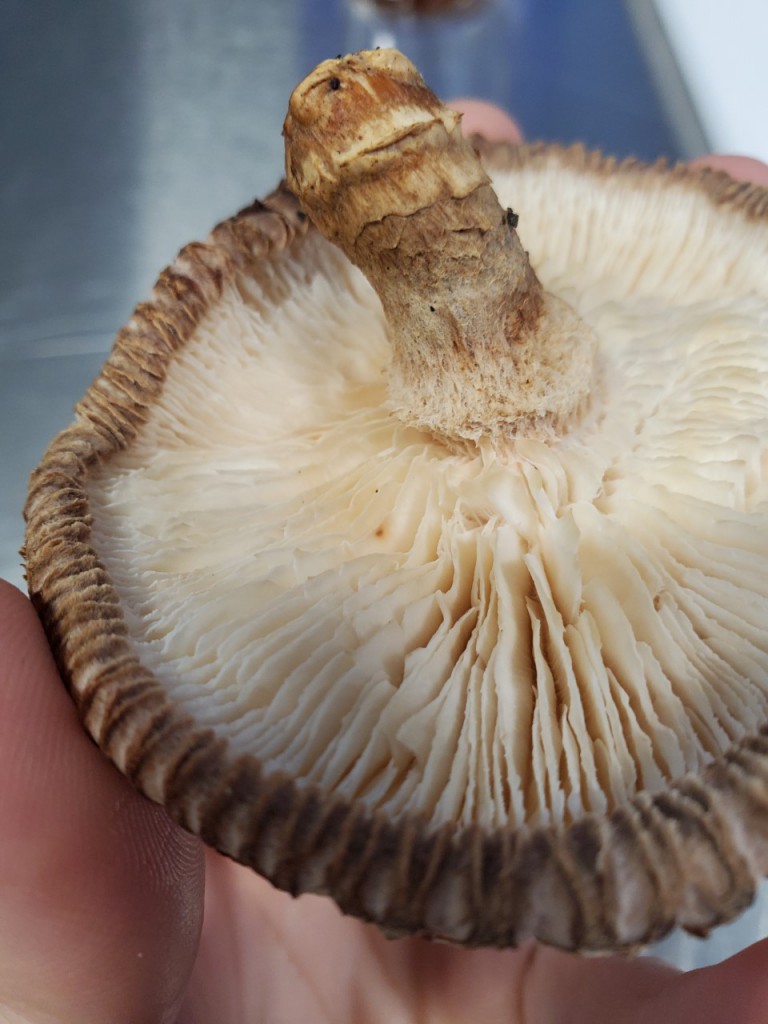
Shiitakes always have jagged gills 
Leave a mushroom gills down on light or dark paper overnight to see their spore print
Much like growing your own vegetable garden starts with ordering seeds, growing your own mushrooms starts with ordering inoculum. This inoculum consists of hyphae (microscopic filaments) grown on a food source, in some cases barley or sawdust. Pay close attention when ordering your Shiitake inoculum as there are different options. Warm weather (WW) strains are best suited for our Georgia climate, while Cold Weather (CW) strains take longer to fruit here, if they ever do. There is also a Wide Range (WR) strain which, as its name suggests, has a tolerance to a wide range of conditions. This is a great option for beginners and does well in our climate.
Since shiitakes are grown on logs, selecting your wood is just as important as your inoculum. Shiitakes prefer hardwoods, especially oaks, but also thrive on sweetgum and other native trees. It is not recommended to cut down trees on your property exclusively for growing shiitakes, but if the trees are being removed anyway, they can be useful log sources. If you aren’t having any trees removed, ask around: you probably have a neighbor who is. Logs need to be inoculated within a few days of being harvested, so you need to act fast! Make sure you order your inoculum and have it ready to go before your logs are cut. If your inoculum arrives early, you can keep it in the refrigerator for several weeks until you are ready to begin the inoculation process.
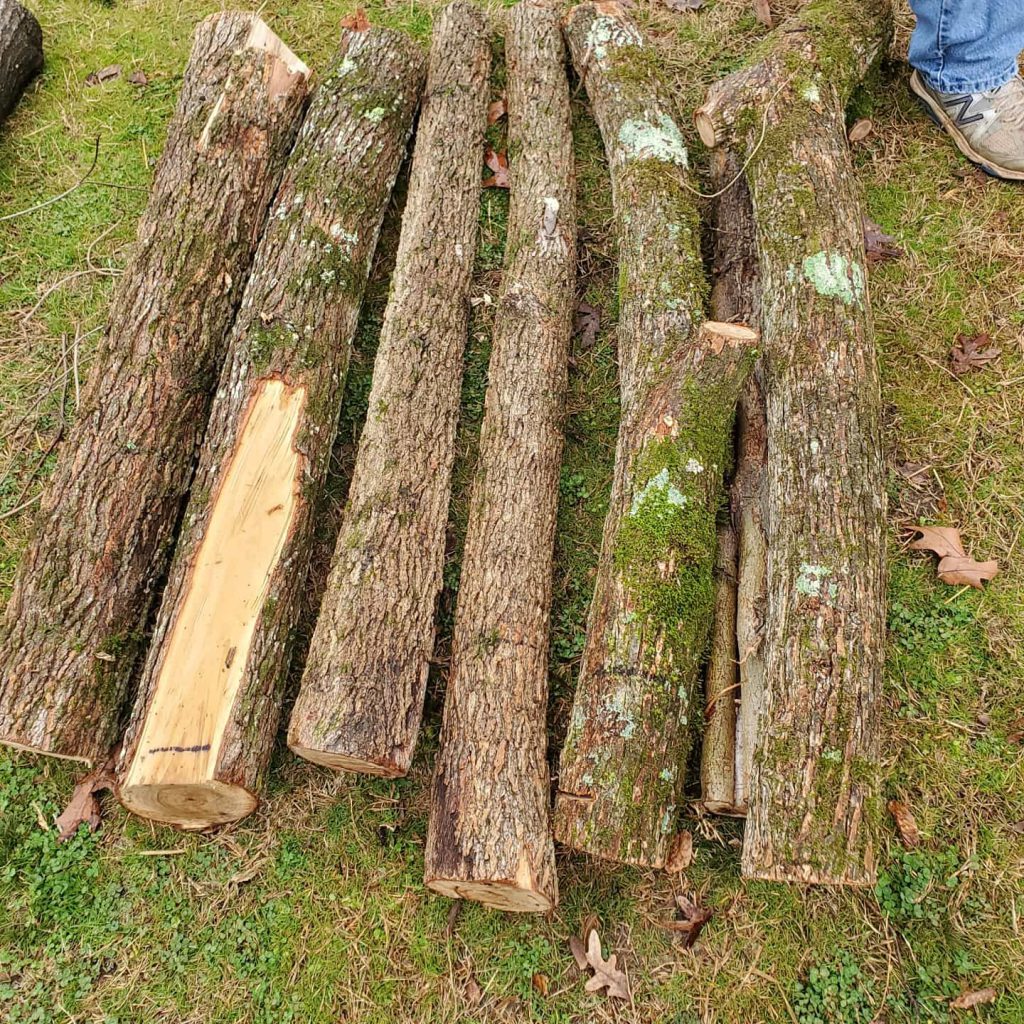
Sweetgum logs for shiitakes: the second from the left is a poor choice due to the exposed tissue 
Cutting logs down to size
Cut your logs to about 48 inches long, and make sure they are completely covered in bark. Large areas of exposed tissue along the log can be entrance points for other fungi that will break down your log faster and compete with your shiitake crop. Once you’ve cut your log, drill holes with an angle grinder fit with a screw tip bit and stop collar every six inches down the log. Rotate the log two to three inches and start the next row of holes offset from the previous row. The reason for this uneven spacing is because hyphae in the inoculum will form mycelium (branching tissues) that will grow lengthwise along the log instead of around the entire log.
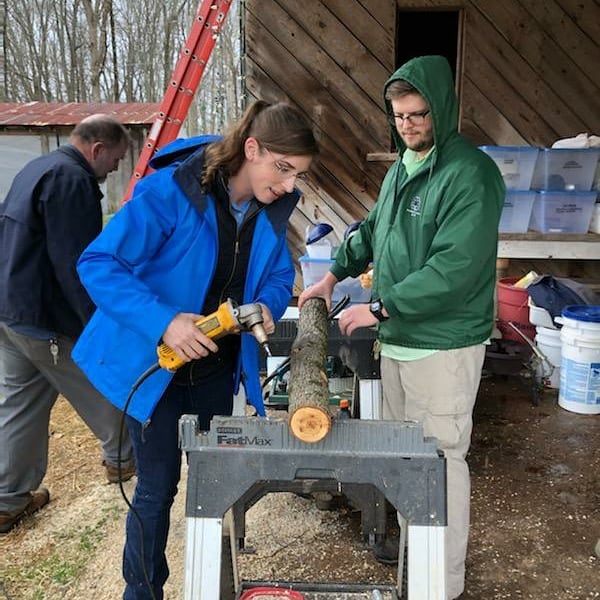
Drilling holes for the inoculum 
Using an inoculator to plug holes with loose inoculum
You can either buy your inoculum in pre-formed plugs, or you can buy it loose and use an inoculator to plug the wholes yourself. Either way, make sure all holes around the log are filled. It takes about five pounds of shiitake inoculum to treat twenty logs. Once your log is inoculated, seal each hole and both ends with food-grade wax. Cheese wax or beeswax are both acceptable, though beeswax can be expensive and cracks in extreme cold. Sealing with wax makes sure that no other fungi infest the holes and compete with the shiitakes. Finally, label your log with the date, shiitake strain and variety of wood.
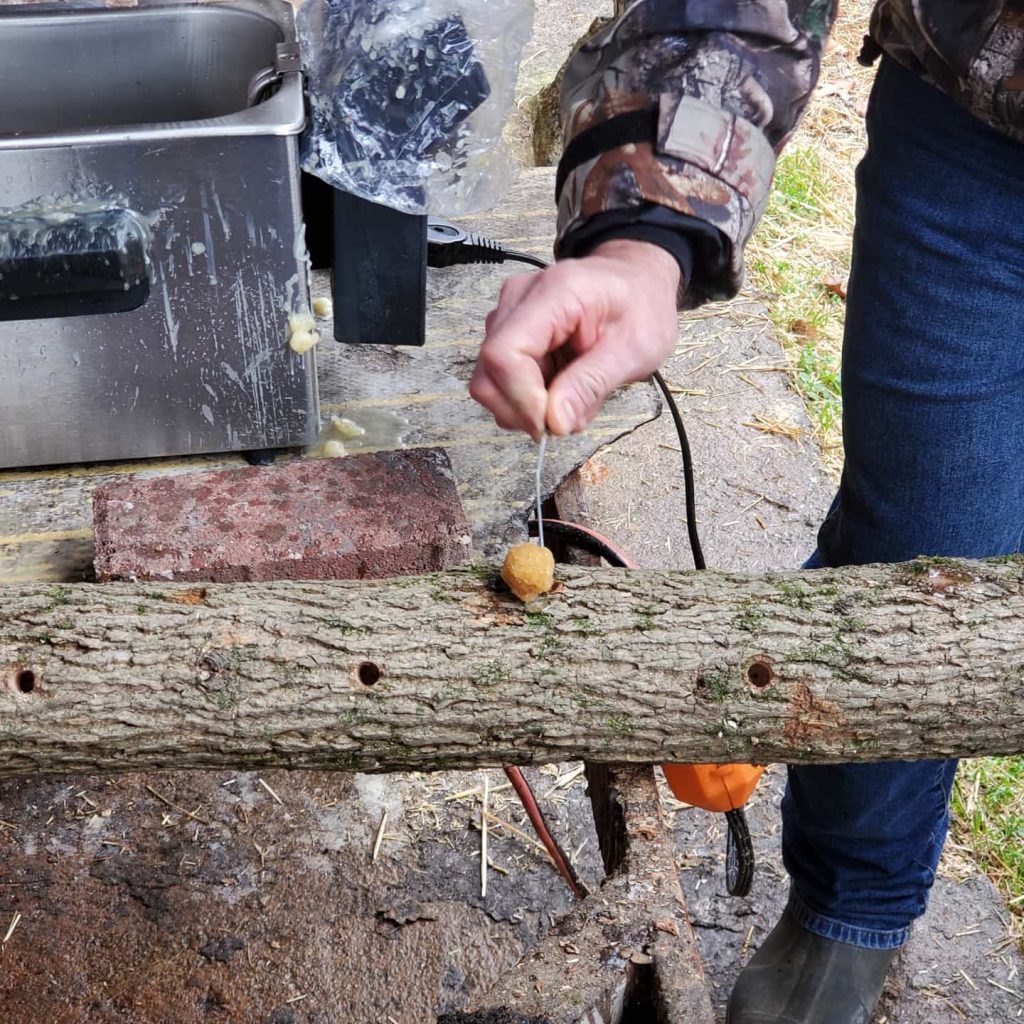
Sealing holes with hot melted cheese wax 
Sample label
There are multiple ways to stack your logs, but you should keep one priority in mind: minimizing rain shadow. Moisture is critical to shiitake production, so ensuring even rain or irrigation coverage is essential. Stacking logs against a trellis in an A-frame form can help encourage even moisture. You can also install a drip or mist line above your logs to provide added moisture in times of drought. Depending on the weather, it will take your shiitakes about one year to fruit.
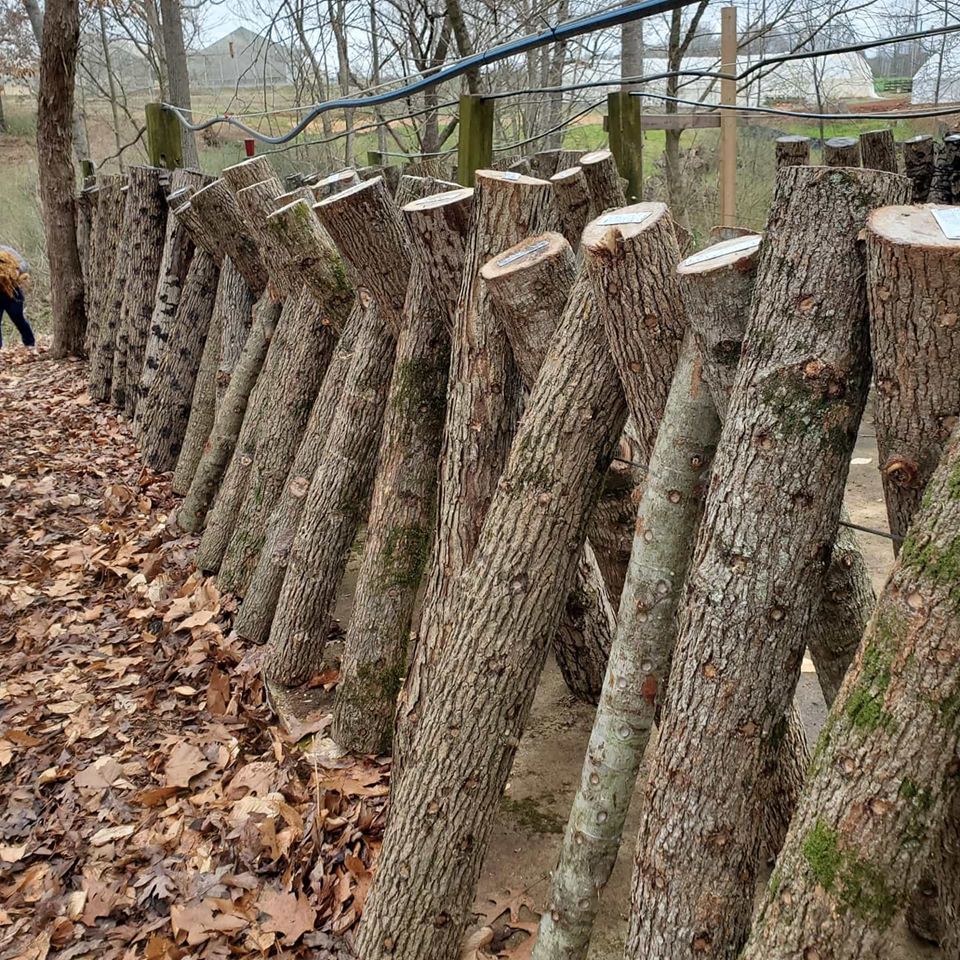
Though shiitakes are relatively easy to grow, it’s not guaranteed that you won’t have other species of hardwood loving fungus on your logs. Here are some other common fungi you may see in addition to your cultivated mushroom crop:
Turkey tail: This is a very common fungus in our hardwood forests. It has a shelf-like growth habit and the caps are hard with concentric half-circles. While they are not toxic, they are certainly not palatable. In fact, their texture makes them almost completely inedible.
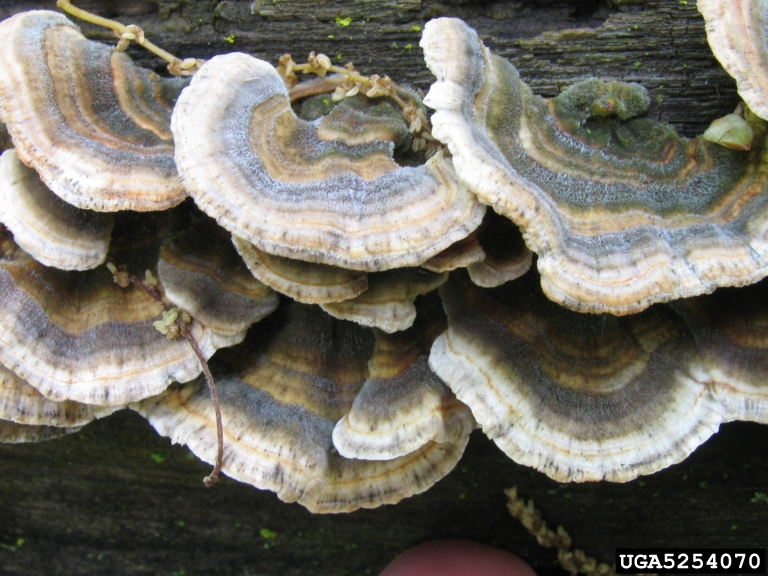
Hypoxylon: A black, velvety fungus, these pustules commonly appear on dead oak wood. It is also a common opportunistic fungus that can lead to a decline in living oak trees.
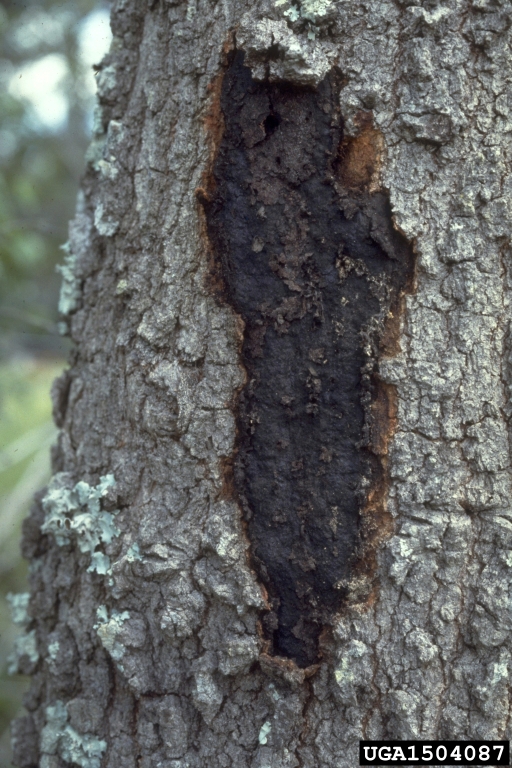
Galerina marginata: While this mushroom is very rare, it is also very deadly! It is brown in color and in some ways resembles shiitakes. One of the main differences is that it has a brown spore print and is noticeably smaller.
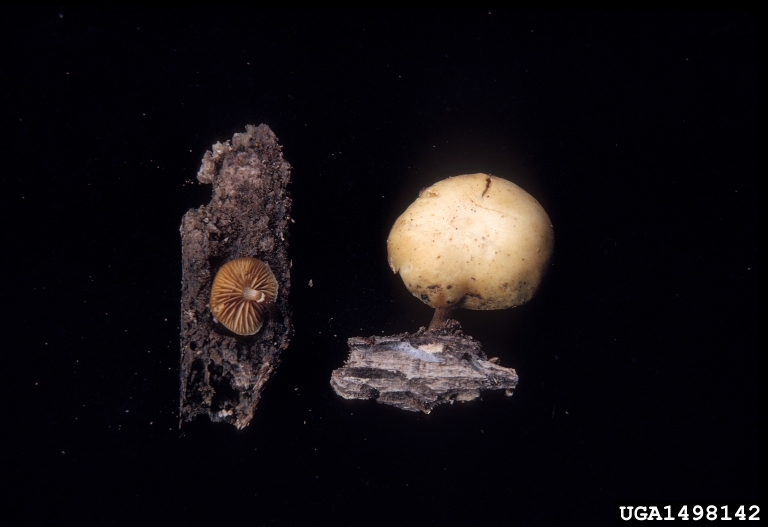
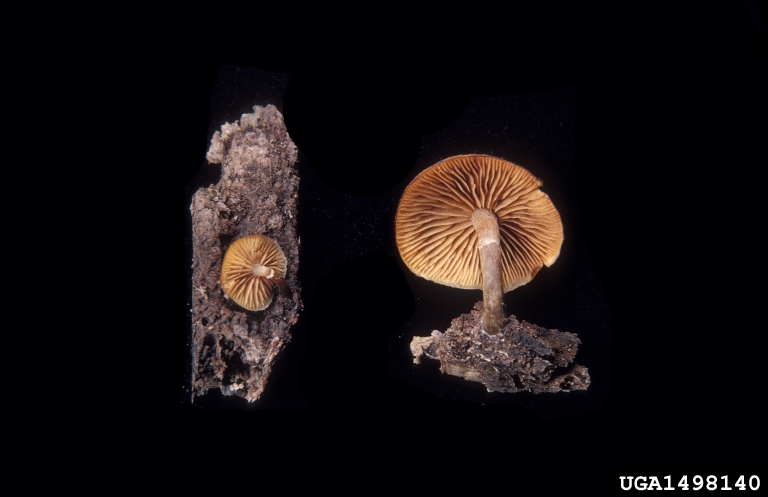
Shiitake mushrooms can be a great way for farmers to keep production going year-round, as well as an opportunity for value-added products like spice mixes and teas. They can also be an excellent project for the home gardener who wants a new challenge or something to involve the whole family!
***all photos are credited to Melissa Mattee, ANR Agent, Fulton County unless otherwise specified***